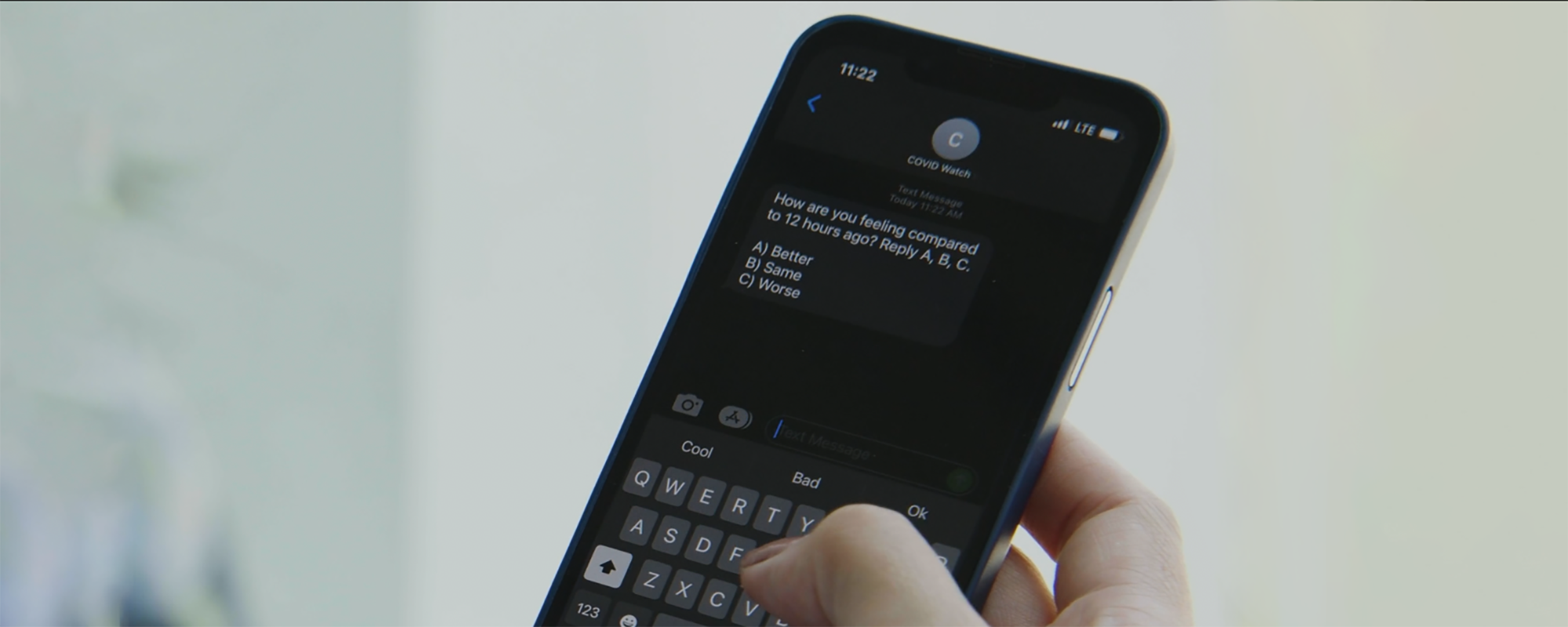
COVID Watch
Project status
Collaborators
Doreen Lam
Nancy Bonalumi, RN
Susan McGinley, CRNP
Andrew Parambath
Bill Hanson, MD
PJ Brennan, MD
Kevin Volpp, MD, PhD
Nina O'Connor, MD
Ann Huffenberger, RN, DBA
Susan Day, MD, MPH
Innovation leads
Awards
Publication of the Year Award, AcademyHealth, 2022
Top 20 Clinical Research Achievement Award, Clinical Research Forum, 2023
Funding
PCORI
Opportunity
Early in the pandemic, we knew that for every patient hospitalized with COVID-19, there were 25 or more isolating at home. Penn Medicine needed a way to effectively monitor these patients so that clinical declines could be identified early and escalated appropriately.
Without close monitoring, there was concern that patients with mild cases may present to the emergency department – unnecessarily putting themselves and others at risk for exposure and increasing the chances that hospitals would become overwhelmed by surges.
Intervention
COVID Watch is an algorithmically driven Way to Health program that enables patients who are confirmed or likely to have COVID-19 but not sick enough to require hospitalization to be safely monitored at home.
Penn Medicine clinicians enroll patients in the program directly from the electronic health record. From there, patients receive twice-daily automated text message check-ins to assess how they are feeling and if they are having trouble breathing. When patients report worsening symptoms, protocols for escalation to telemedicine or hands-on care are enacted immediately.
All versions of the program are available in English and Spanish.
Impact
COVID Watch improved care delivery and patient outcomes while reducing the burden on clinical staff and decreasing costs for the health system.
More than 18,500 patients were enrolled in COVID Watch during its first year in operation – 83 percent of which were “watched over” using text messages alone. For the 16 percent of patients who needed extra help, the median response time for escalations was 14 minutes. Patients reported that it was reassuring to know that Penn Medicine was watching over them, and automation made the program incredibly efficient to staff. In its first year, COVID Watch saved the health system approximately $8 million, mainly in the form of a reduced need for clinical staffing.
In addition to the original version of the program, several spinoff programs were launched. COVID Pulse monitored the sickest patients using a pulse oximeter, and Pregnancy Watch and Cancer Watch were tailored to the specific needs of their patient populations. The team also achieved scale beyond the walls of Penn Medicine with expansion to Main Line Health.
A retrospective analysis published in the Annals of Internal Medicine showed that patients enrolled in COVID Watch were 68 percent less likely to die from COVID-19 than patients who received the typical course of outpatient care. It also found that the program was equally accessible and effective for everyone – with all major racial and ethnic groups benefitting. The team also published a randomized controlled trial in the New England Journal of Medicine showing that pulse oximeters did not change outcomes for COVID Watch patients. This finding suggests that a low-tech approach for remote monitoring can be just as effective as more expensive or complex options.
COVID Watch was retired on April 10, 2023, in response to low COVID case counts. Over its lifetime, the program monitored more than 38,000 patients, 87 percent of whom had no escalations. COVID Watch is an exemplar of how innovative health systems can rapidly launch a solution, maintain and iterate it over several years, and then discontinue it when no longer needed.
Beyond the pandemic, the COVID Watch model can be adapted to manage other clinical conditions, such as hypertension, diabetes, or heart failure, where frequent human contact might be supplemented or partially replaced with automation.